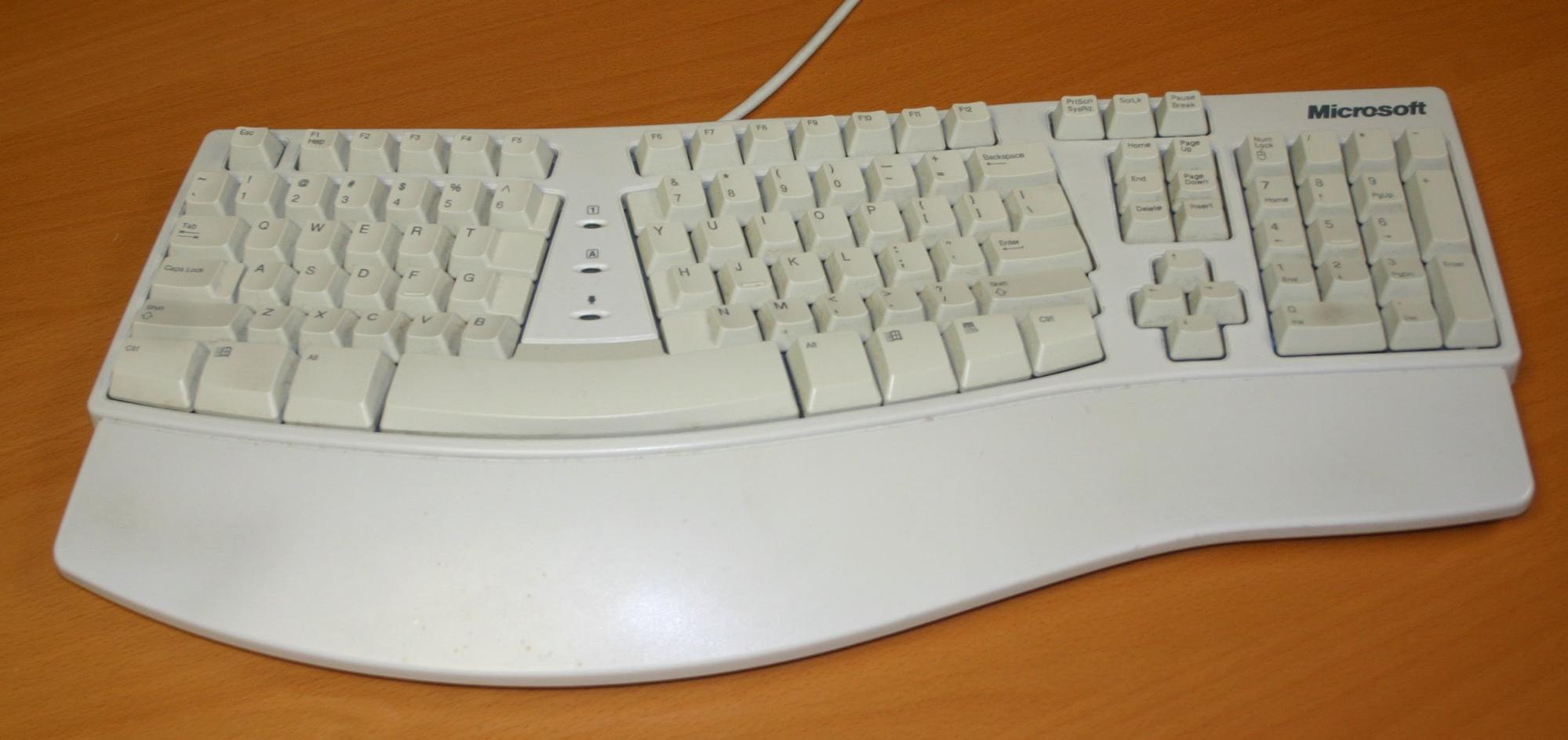
The first week of January was a busy one for people who follow Microsoft hardware news. First, the company revealed that the upcoming Windows laptops, along with desktop keyboards, will be getting a dedicated Copilot key, designed to launch the Copilot generative AI assistant in Windows 11.
The other big news item is that, several months after Microsoft announced it was getting out of the PC hardware accessory business, it revealed a new partnership with Incase. That company will make and sell PC accessories that were originally designed and sold by Microsoft, including keyboards, mice, webcams, etc. Furthermore, Incase plans to make and sell new accessories that Microsoft previously designed but did not release. One of those future products is reportedly a new ergonomic keyboard.
Interestingly, Microsoft's first-ever PC keyboard was also designed to be ergonomic. It also was the first keyboard to include a dedicated Windows key, similar to this week's reveal of the new Copilot Key.
We've already posted articles about Microsoft's earlier hardware products, including add-in cards for Apple II PCs, along with cards made for IBM-based PCs. However, with the exception of the Microsoft Mouse products that first launched nearly 40 years ago, the company had never entered the PC accessory business until the launch of the Microsoft Natural Keyboard.
Before then, keyboards were mostly designed as straight rectangles full of keys. However, the result was that tons of people who had to use them for work for hours at a time started getting carpal tunnel syndrome on their wrists due to their uncomfortable positions while typing.
The idea of designing a keyboard that would be more comfortable to use for long periods of time was not a new concept in the early 1990s. Indeed, in 1993, Apple released its own Adjustable Keyboard for its Mac PCs.

On the surface, the main keyboard looked like most others, but the center of the keyboard had a hinge that allowed the two halves to separate on a fixed base while the spacebar remained in place. There were also two removable wristrests for each side of the keyboard, and a separate keypad with all the number, arrow, function keys, and its own wristrest.
In short, the Apple Adjustable Keyboard was a bust. It took up a lot of desktop space, and the people who bought it said that it was not comfortable to use. It was also reportedly very expensive when it launched.
When Microsoft decided it wanted to make its keyboards, it got some help from an outside firm, Ziba Design. In a post on its own site, Ziba stated that Microsoft "came to us to help make the ergonomic keyboard as accessible to home users as they'd made the word processor."
The final result was a curved keyboard design that split the main key layout and still included the number and arrow keys on the right side. The wrist rest was integrated into the keyboard instead of being removable.
The angles of the keyboard were made so people could type while their wrists would remain straight. Ziba's site says that many keyboard designs were sent to testers at Microsoft who "would simulate typing—sometimes for hours—under the watchful eye of ergonomics experts and a suite of pressure sensors." Another company, Key Tronic Corporation, made the actual keyboards and also had some input in their design.

Microsoft also introduced the Windows key in the Natural Keyboard over a year before the release of Windows 95. The keyboard actually had two of these Windows keys, which were designed to launch the Start menu. There was also a third new key added, the menu key, designed to let users bring up a menu that they might normally launch with the right-side mouse key. Unlike the Windows key, which has been included in the majority of PC keyboards and laptops, the new Menu key has not always been included in third-party products.
The Microsoft Natural Keyboard was first announced in September 1994. As first reported by The New York Times, the keyboard actually went on sale in early October 1994 for the price of $99. That price made this ergonomic keyboard far more affordable than other similar products, including Apple's. A number of computer makers, including Dell, started including the new keyboard with their new PCs in the same year.
The final result was that the Microsoft Natural Keyboard was a huge critical and sales hit. In November 1997, when Key Tronic announced it was going to make the second generation version of the keyboard, The Spokesman-Review reported that the first version had sold over 2.9 million units since the October 1994 launch.
With Incase announcing it will continue to sell Microsoft-designed ergonomic keyboards, it would appear that the legacy of Microsoft's PC accessory lineup will continue in some form, and that's great news for the many fans of the company's products.



3175x175(CURRENT).thumb.jpg.b05acc060982b36f5891ba728e6d953c.jpg)
Recommended Comments
There are no comments to display.
Join the conversation
You can post now and register later. If you have an account, sign in now to post with your account.
Note: Your post will require moderator approval before it will be visible.